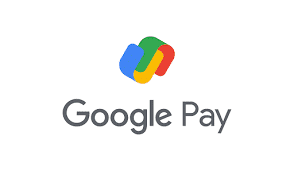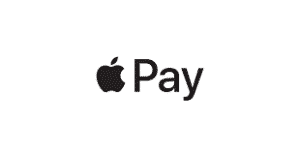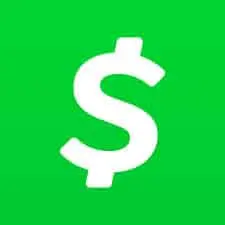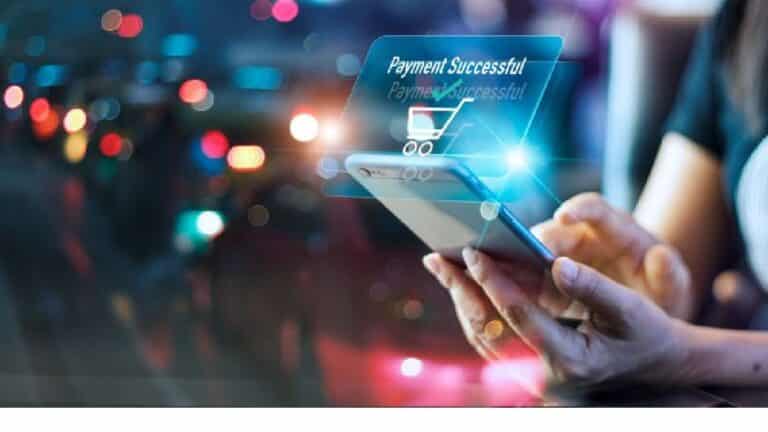The best mobile payment applications make it simple to pay for anything with just your smartphone and an app. Since the development of Near Field Communication (NFC). This turns individual smartphones into the equivalent of a payment card, mobile apps that provide contactless payments have become popular. Mobile payments, like contactless credit and debit cards, have their limits, but they also have costs, which aren’t always obvious.
As a result, as mobile apps fulfill the promise of the digital wallet, they are transforming and increasing the way we pay for goods in our daily lives. They specialize in minor transactions, which eliminates the need for currency, and this applies not only to shopping but also to ordinary purchases.
Mobile payment apps, in addition to contactless payments, can be used to send money to individuals you know, such as friends or family, or to pay traders directly. As contactless payment platforms become more widely available. We’ll assist you in selecting the best mobile apps and NFC systems for your needs.
What you will see here?
Payment Options
Friend payments, such as Venmo, are probably the most popular mobile payment option. However, there are a variety of additional options for paying your pals directly. You can pay other people using Apple Pay Cash, Circle Pay, Facebook Payments, Google Pay, PayPal, Square Cash, and Zelle. Apple Pay, on the other hand, can only be used to pay those who have iPhones. Whereas Venmo and the others are cross-platform services.
When you get money, most applications put it in a holding account, similar to a limited bank account. The exceptions include Zelle and Google Pay, which send money directly to the recipient’s bank account. Several apps, such as Venmo, charge a fee to transfer funds from your app account to your bank account (see next section).
Charges on payments :Free or Paid?
Unless you pay using a credit card rather than a debit card or a bank account. Most person-to-person payments are free using these apps. When you use a credit card as a payment method, the credit card company charges you a fee of roughly 3%. However, bear in mind that certain cards still provide cashback, and you might even receive bonus points for using mobile payments, so do the math to discover which payment option is best for you.
When you want to transfer money received to your bank account, certain firms impose an additional cost. If you use Square Cash’s auto-deposit feature, you’ll pay 1%, and Venmo will charge you 25 cents for every expedited deposit. Because Zelle is linked to banks, money sent to you is deposited directly into your bank account rather than into the payment service account. When you use Google Pay to deposit money into your bank account, there are no fees.
International transfers are another circumstance when you’ll pay considerably larger rates. See the International Support section below for further information.
In-Store Payments
A handful of the apps allow you to pay both merchants and pals. In this category, Google Pay, Apple Pay, and Samsung Pay are all significant candidates. Apple has overtaken all competitors in terms of in-store contactless payments. Samsung Pay is unique in that it works anywhere a magnetic stripe card does. Although magnetic stripe cards have been mostly supplanted by more secure NFC point-of-sale systems.
The PayPal app may also be used to pay in a variety of stores. However, it lacks Apple Pay and Google Pay’s direct NFC wireless payments. Nothing beats the pleasant haptic “clunk” you get when an Apple Pay transaction completes in our opinion.
In this area, Square Cash is a bit of a hybrid: The app doesn’t allow you to pay in stores, but it will mail you a debit card that you may use with any balance you’ve accumulated in your Square Cash account as a result of people paying you.
Payment Restrictions
The amount you can pay varies depending on the service, but as you use it more, your maximum authorized payment usually increases. Venmo and Square Cash both have a weekly limit of $300. Bank set limitations at Zelle. For example, the Ally online bank limits Zelle transfers to $5,000 per day and $10,000 per month. Right away, Google Pay allows you to send up to $10,000 each week.
Let us see the apps now.
1. Google Pay

Google Pay is an Android mobile payment app that comes pre-installed on most Android phones. Bloomingdale’s, Chick-Fil-A, KFC, Nike, and Staples are among the stores that accept it, as do online services like Airbnb and DoorDash. Because the card number is not transferred directly and is encrypted using multi-layer security, it promises to be safer than using a normal credit card.
Google Pay accepts credit cards from Chase, Citi, Discover, and American Express, among other major issuers. That debit card from your local credit union with only three branches, on the other hand, is unlikely to support it. However, you can link your PayPal account straight to Visa Checkout, which accepts all Visa cards.
Also perplexing is the fact that you must use a different app, Google Pay Send, to send money directly to another user (person-to-person transaction).
Apple Pay

Apple’s goal is to make the complex simple and accessible to everyone, and Apple Pay, their mobile payment service, is no exception. There is no need to download an app, and it works on iPhones as well as Macs for online shopping.
The user associates their Apple account with their credit card information. The iPhone is then used to purchase at a store using a contactless payment method, which is deemed more secure because the user must authenticate identity using the Touch ID sensor or Face ID. Users may now send money via iMessage or by just asking Siri, Apple’s digital assistant. When you get the funds, they are automatically deposited into your Apple Pay Cash account, which you can subsequently transfer to your bank account.
Apple Pay accepts at approximately half of all US retail locations, including Starbucks, Walgreens, McDonald’s, and Best Buy, among many others.
Zelle Pay

Zelle is a mobile payment app that isn’t as well-known as Venmo, but it’s no slouch: In just the first six months of 2020, the bank consortium behind it claims to have moved more than $133 billion through 519 million transactions. Unlike most mobile payment services, Zelle connects with your bank’s app or website. Payments are made directly to the recipient’s bank account, rather than through a middleman, as they are with Apple Pay, Google Pay, and Square Cash. Although the interface is on the bare-bones side, the service shares information with marketers and does not provide in-store purchases, this makes for extraordinary convenience. Zelle is an excellent choice for no-fuss money transfers with friends and family, as it makes the procedure simple, free, and quick with minimal setup.
Zelle starts with the two methods. You can use it through your bank’s mobile app or website, or by downloading the Zelle app from the app store on your smartphone. I mostly tested using the former way, but I also tried out the app, which is accessible for Android 5.0 and above, as well as iOS 9.0 and up. It collaborates with a large number of US banks, including Bank of America, Chase, Citi, PNC, and Wells Fargo. On Zelle’s start page, you can check to see if your bank supports it.
Samsung Pay

Samsung Pay, the company’s mobile payment app, is now available to users who own one of their market-leading Galaxy phones. It supports some of Samsung’s most recent flagship devices, including the Galaxy S9, but not on phones from other manufacturers, restricting its adoption. The Samsung Pay app accepts credit and debit cards from a number of major banks.
Because shops are not compelled to participate, Samsung Pay has a near-universal acceptance. Rather, Samsung Pay works with both modern EMV and NFC credit card readers as well as older magnetic stripe readers – by holding the phone close to the scanner, the credit card information stored on the magnetic strip is communicated via a mechanism called magnetic secure transmission (MST).
Because of its flexibility in dealing with the credit card reader, Samsung Pay can truly replace that stack of credit cards in your wallet with a phone app.
Cash App

Most of us are familiar with Square as the maker of the white credit card swiping devices that can be found in many cafes and small businesses. The company changes its name to Block, Inc. But its many Square features and digital services get better with time. Cash App, the company’s free mobile payment app, allows you to send and receive money from friends, make contactless payments using Square readers, and make online purchases using the Cash App debit card.
Cash App is up against Apple Pay, Google Pay, Venmo, PayPal, and even Zelle in the mobile payment app market, which is very competitive. This Cash App, on the other hand, stands apart because of several unique features, such as tax filing and stock and Bitcoin purchases.
PayPal

PayPal appears to have been around for decades when it comes to online transactions, and its mobile app is no exception. They aim to do more than just provide seller protection for online sales.
They now seek to offer direct payments to individuals as well as penetrate the retail payment business. Albeit you are still more likely to be able to use this service to pay online rather than at the checkout counter. The lack of NFC capabilities in PayPal’s app is the reason behind this. As well as only a few retailers joined on board to take PayPal, which has impeded efforts thus far.
The fees, which complicate understanding due to the large number of them, have been a drawback of PayPal. Whether you’re buying something online or in person, PayPal doesn’t impose a fee. A person-to-person transfer (without seller protection) is free, so you can contribute cash to help divide a check.
When transferring from a linked bank account, there is no charge. When using a linked debit card to make an Instant Transfer, there is a charge.
Venmo

Venmo is accessible using a smartphone app, and you can sign up using your Facebook account if you prefer. Connecting your bank account or credit card is the next step. The app then allows you to send and receive money from other Venmo members. Because the app can access your Facebook or phone contacts, you can send money to a phone number or email address; if the recipient is not already a Venmo user, they ask to sign up for an account.
Venmo is best for online purchases but accepts by select stores, like Forever 21 and Foot Locker.
Conclusion
The mobile payment app was first released in 2012, and it’s been growing steadily since then. Today, it’s available for both Android and iOS devices, and it’s a great option for those who want to pay with their smartphone. Mobile payment apps can help businesses connect with their customers and make their mobile shopping experience easier.
Many of the services listed do more than just allow you to make a payment.
Assume you and your friends went out to a nice restaurant to enjoy the festivities. What are your plans for paying your fair share? Many payment apps and services allow you to split payment. Just enter the total amount and the names of all the people who need to contribute.
Read more:
- Apple Card : Everything you need to know about Apple Card.
- Touch ID apps -Best alternatives you could find for iPhone right now!
- How to add your bank account to your Apple card payment option?
- Best Portable chargers 2020- Portable chargers to keep your gadgets going!
- Everything you need to know about Google Pay!

















